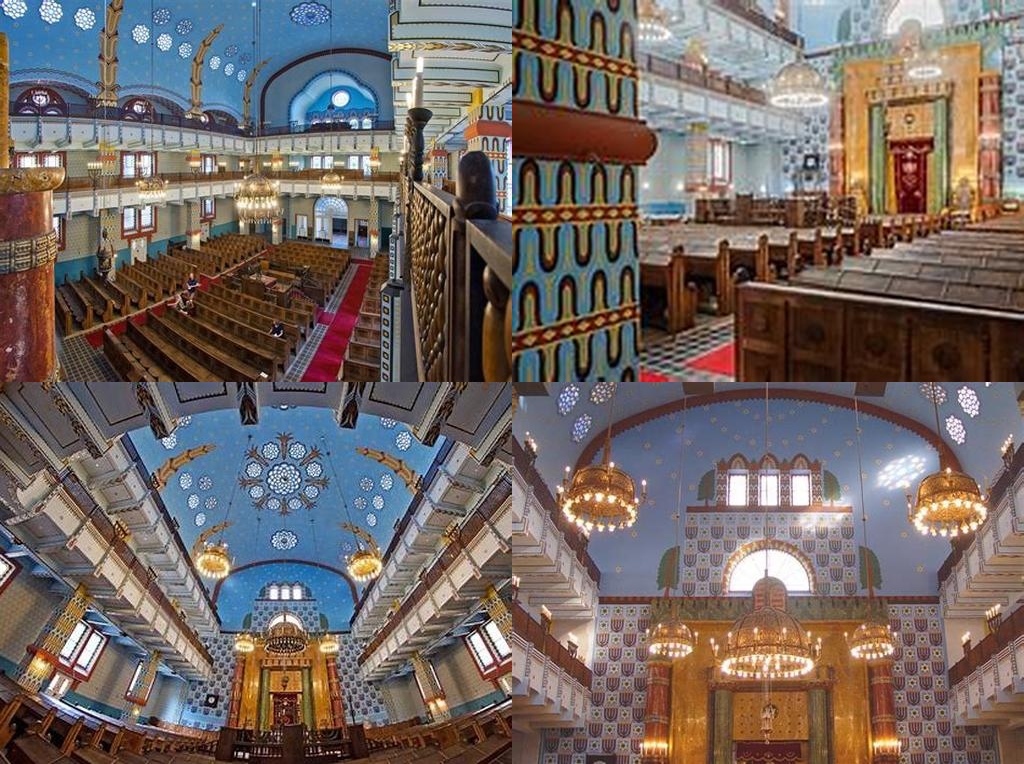
Kazinczy utcai zsinagóga és lakóház—or, for non-Hungarian speakers, the Kazinczy Street Synagogue and Residential Building—stands at the heart of Budapest’s vibrant Jewish Quarter, a place where faded elegance, creative energy, and history collide. The building rests on Kazinczy utca, a street best known for its lively ruin pubs and cutting-edge food stalls today, but one that also holds the memory of the city’s Jewish community in its brickwork. While many people flock to the stunning Dohány Street Synagogue for its grandeur, the Kazinczy Street Synagogue offers an entirely different experience, one that’s just as powerful but far more personal.
Stepping through the archways of this landmark, you’re immediately struck by its striking façade—delicate, colorful ornamentation, intricate mosaics, and bold geometric windows, thanks to the Art Nouveau and Jugendstil influences that shot through Hungarian architecture in the early 20th century. The synagogue’s story began in 1909, when the thriving Orthodox Jewish community commissioned architects Sándor and Béla Löffler to design not just a place of worship, but a complex including a school, community center, and residential apartments. These bold brothers managed to infuse every dizzying detail of the façade with vibrant Jewish symbolism—check out the twin stone lions crowning the entrance, the stylized menorah motifs in the ironwork, and the intricate golden-hued mosaics that glow in the sunlight.
Inside, things feel completely different from the city’s larger synagogues. The main sanctuary is humble, intimate, but quietly spectacular in its own right, flooded with moody natural light. Star-patterned stained glass windows dot the upper walls, casting colored shadows over the pale wooden pews and hand-painted decoration. Look up—the ceilings are a latticework of stenciled stars and floral patterns, blue and ochre-toned, evoking a less ostentatious yet utterly immersive take on the sacred. The original Torah Ark stands out, topped with lush carved woodwork and more of those fabulous mosaic details. Services follow Orthodox practice even today—something rare in Budapest—evidence of the community’s resilience and continuity.
But the story of the Kazinczy Street Synagogue isn’t just about the building. Look to the right as you enter, and you’ll spot the entrance to a narrow alley leading into the connected residential building. This was not merely for the religious elite; it was created for ordinary Jewish families, integrating daily life with faith. The wall still has glimpses of old mezuzahs, and if you’re lucky, locals might share tales about their great-grandparents who once peered out of these same windows.
It wasn’t always so peaceful here. In World War II, Budapest’s Jewish Quarter became a tragic part of the city’s history. The synagogue served as the center of Orthodox Jewish life, and the surrounding district was turned into a ghetto in 1944-45. Many residents sought shelter inside, enduring the horrors of occupation. After the war, the decimated community struggled, but the synagogue survived, acting as headquarters for the Jewish Orthodox community and slowly regrowing its congregation. The fact that, today, you can still hear prayers and laughter here on Shabbat is nothing short of extraordinary.
What surprises many first-timers is the active life of the complex. The synagogue has a lively schedule, with frequent concerts, lectures, and tours. Sometimes you’ll spot a Chuppah (wedding canopy) or bump into students rushing to after-school classes—it’s a living microcosm of Jewish Budapest. The residential building buzzes with life, connecting past and present, just as the Löffler brothers intended.
So next time you’re exploring Budapest’s Jewish Quarter, slip away from the bustle of Király utca or Szimpla Kert and spend time on Kazinczy utca. This is where ordinary lives met extraordinary history. Take your time wandering the courtyards, let your fingers brush the mosaic-tiled railings, and imagine yourself part of the ongoing story—one that refuses to fade away, even as the outside world rushes by.





